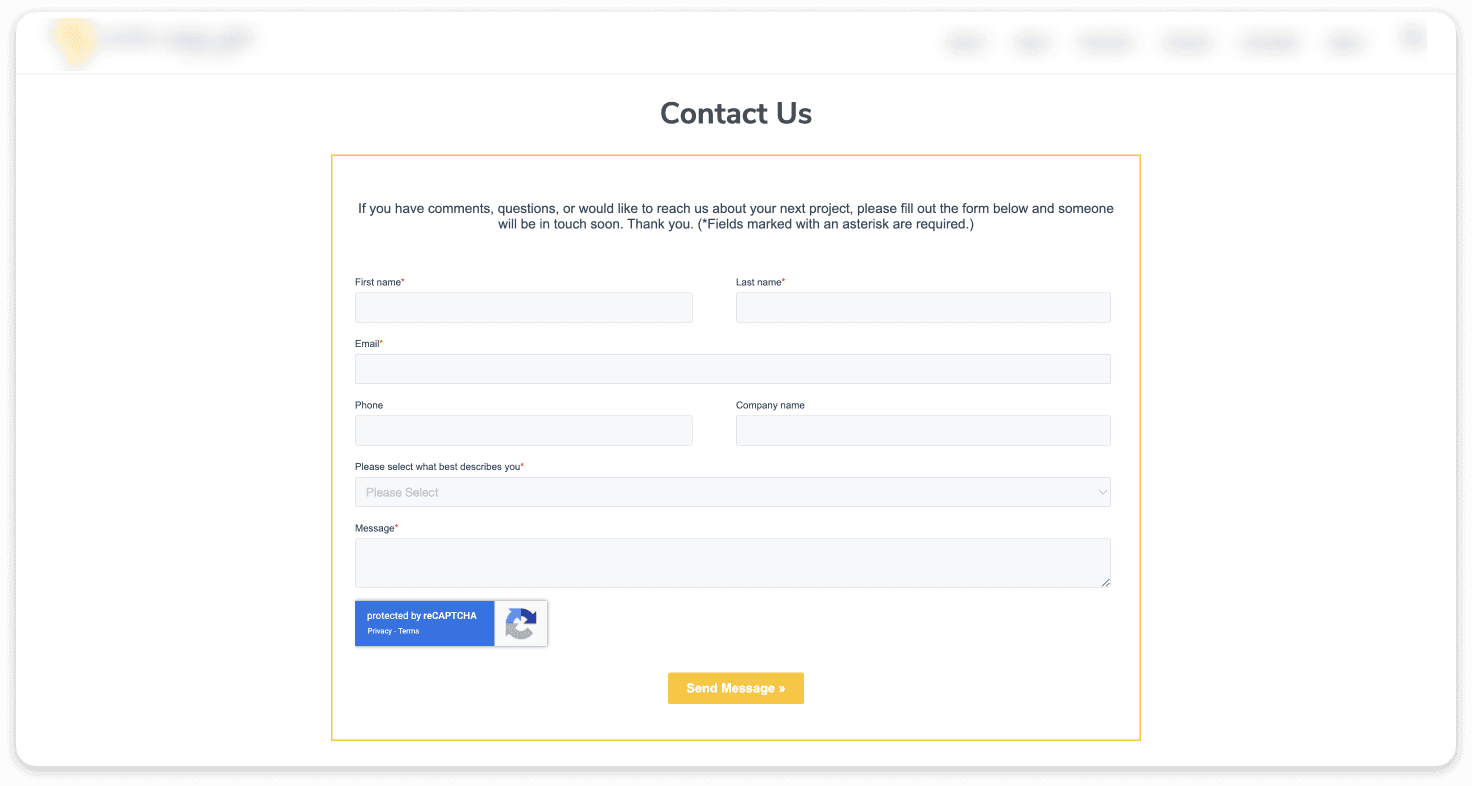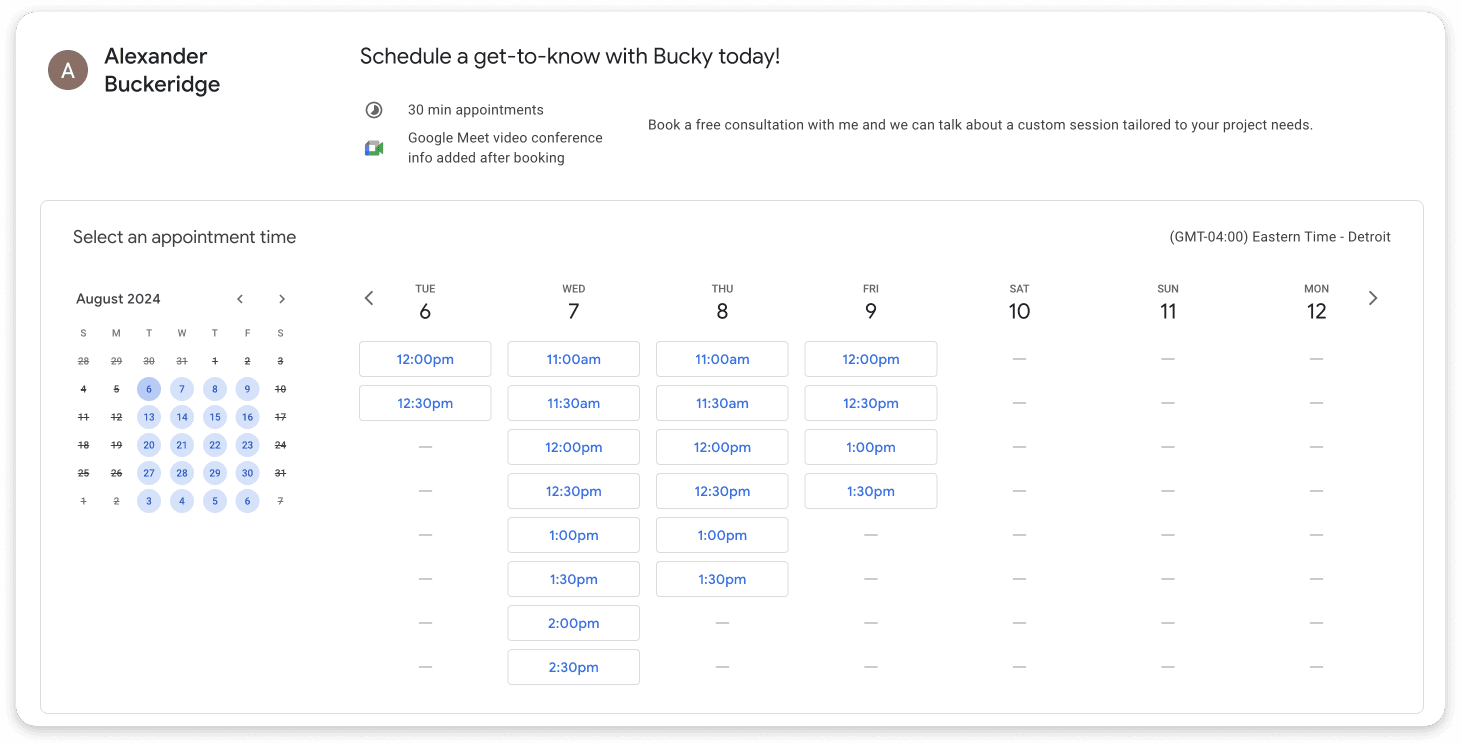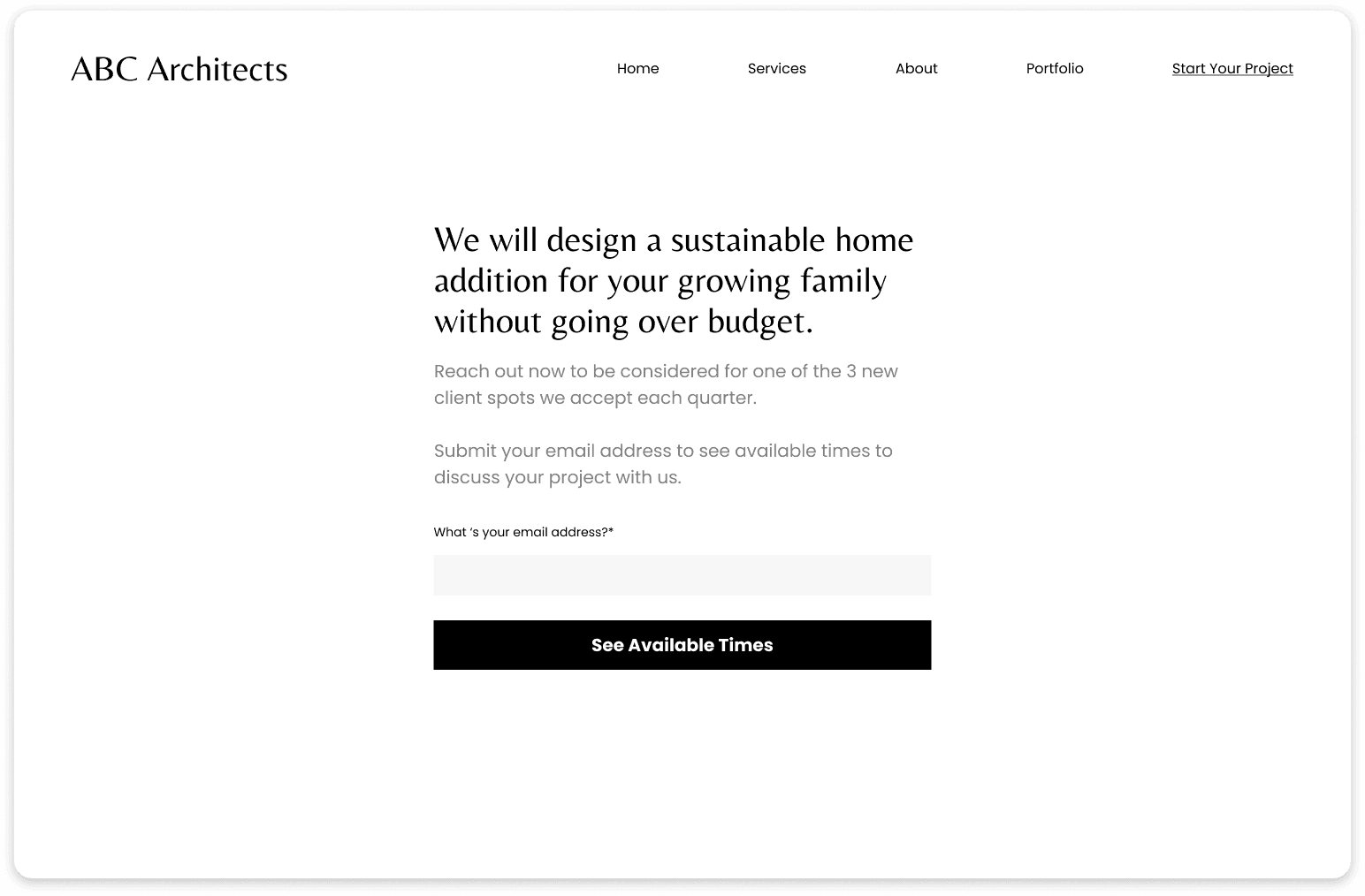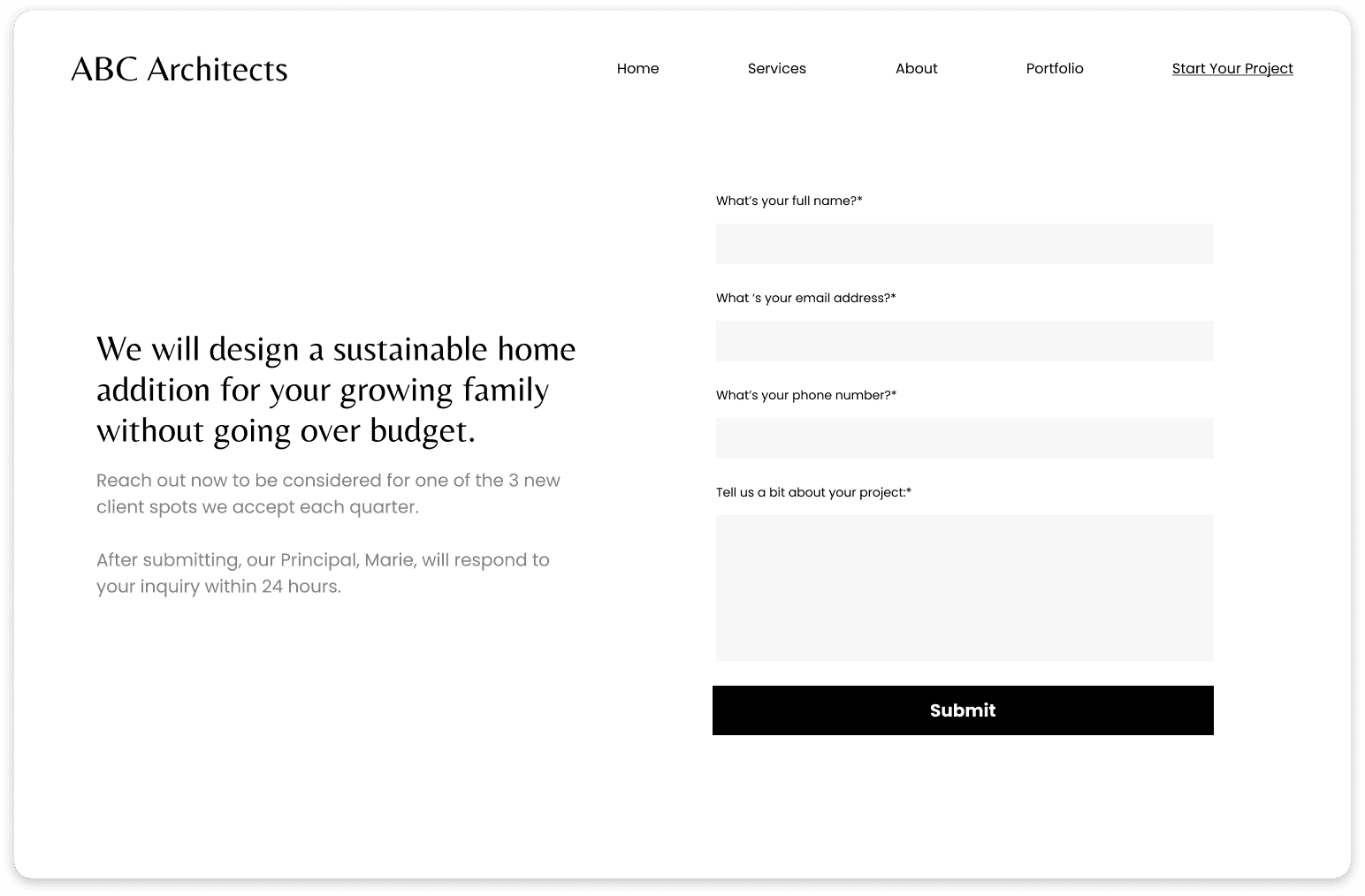Optimizing Contact Page: How To Increase Client Leads
July 28, 2024

Tyler Suomala
Founder of Growthitect
Imagine you’re throwing a fantastic party.
(I can’t believe you didn’t invite me…)
You’ve sent out incredible invitations that included the address, a description of the festivities, and even pictures of what the party will look like. It’s going to be epic.
All of the invitees are pumped! But most people aren’t familiar with how to attend a party like this - it’s really unique.
And you forgot to share instructions for finding the entrance and getting in the door.
So a lot of people show up, but then they can’t figure out how to get into the party. The ultimate bummer. 🤦♂️
This is how I would describe the experience of most architecture firm websites.
They show off their amazing work
Tell visitors how great it is
Make them want more
But then, they leave them guessing about how to take the next step.
Let’s fix this together!
What Is The “Contact” Page?
The “Contact” page is the part of your website that tells visitors exactly what to do next if they’re interested in working with you.
This page includes the instructions for taking the next step.
Most look something like this (but I’ll show you how to improve this below):

Tip to increase clicks to the Contact page: Change the CTA from “Contact Us” to something more actionable like “Start Your Project” or “Meet With Us” - see more examples here.
Why Is The “Contact” Page Important?
This page is arguably the most important page on your website. Why? Because it’s the highest intent page.
Meaning that visitors to this page are ready to learn more about you—they’re convinced, they’re interested, and they want to talk.
The goal of this page is to make that step easy and obvious. Improving this page can significantly boost the number and quality of leads you get from your website.
How To Improve Your “Contact” Page
Depending on your practice, many “Contact” pages will include things like a phone number and business address. That’s great information to include. But I want to discuss how to improve the portion of the page that is usually a form fill or calendar booking.
To make your “Contact” page effective, it should answer three main questions:
01 // Why should a visitor submit the form?
First, explain to the visitor why they should fill out the form.
This is a great place for your transformation statement to remind them, in simple terms, of what makes you different.
For example, you could write something like:
We will design a sustainable home addition for your growing family without going over budget.
This will help clarify who you help, how you help, and why you’re different.
02 // Why now?
Next, emphasize why they should fill out the form now rather than later.
Lean on scarcity by mentioning limited availability or the benefits of starting their project sooner rather than later.
Highlight that by reaching out now, they can secure a spot in your schedule and ensure their project gets the attention it deserves without unnecessary delays.
For example, you could include a statement like:
Reach out now to be considered for one of the 3 new client spots we accept each quarter.
This urgency will help to overcome any last minute hesitations and prompt immediate action.
03 // What will happen after the form is submitted?
Once they’ve submitted their information, what happens next needs to be clear so that you appropriately set expectations.
Does the form trigger an email to your team?
Even better, will it redirect the visitor to a page where they can book a discovery call?

For example, Studio Bucky’s “Start Your Journey” button leads straight to a Google meeting booking page (shown above) which reduces friction and increases leads. (It’s worth noting that many calendars, like Google or Calendly or Hubspot, are able to be embedded on your website.)
No matter your flow, be sure to write what will happen AND when they will hear back from your team.
So you might write:
After submitting, our Principal, Marie, will respond to your inquiry within 24 hours.
or, Submit your email to see available times to discuss your project with us.
This ensures that your prospect knows what to expect, instead of being confused and frustrated by your process.
How many form fields should be included?
If your “Contact” page includes form fields (like “Name”, “Email”, “Location”, etc.), it’s worth considering how those impact the leads that you’ll receive.
Less Form Fields → More Leads, Lower Quality
The fewer fields you have, the less friction there is, making it easier for people to take the next step.
For example, if you only ask for an email address, then you’ll receive more leads. However, not all of the leads will be qualified.
In my opinion, less fields are a great option for young firms looking to get more exposure to their market. Even if most leads aren’t qualified, you’ll learn more about what works and what doesn’t.
Using our examples above, the “Contact” page with one field that directs someone to a calendar booking would look something like this:

More Form Fields → Fewer Leads, Higher Quality
More qualifying questions will result in fewer leads. But they’ll be of higher quality.
More form fields may include:
First and Last Name
Email Address
Phone Number
Description of Project
Using the examples above, the “Contact” page would look something like this:

It’s important to be careful with how many questions/fields you include. People are less likely to fill out forms that ask for too much information. So if you ask for too much, you may never get any leads.
Consider what questions someone who doesn’t know you would be willing to answer. For example, they might not want to share their budget, but they’re probably willing to share more about their project.
TL;DR
The “Contact” page is your gateway to new business.
It should answer three crucial questions:
Why should a visitor submit the form?
Why now?
What will happen after the form is submitted?
By optimizing this page will improve the quantity and quality of your website leads.
Use these steps to take a moment to revisit your “Contact” page today 👍

